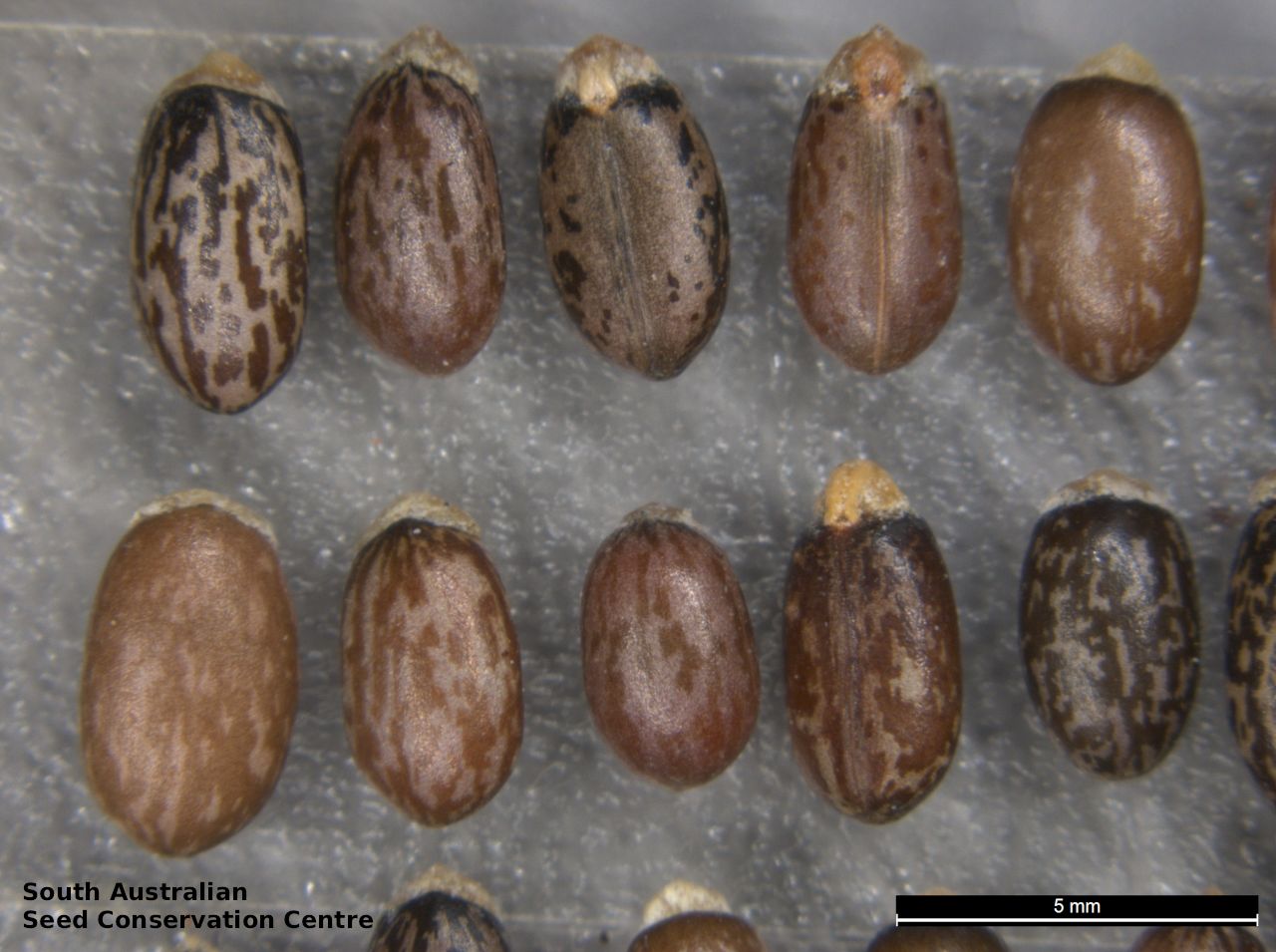






















Botanical art
Prior names
Beyeria lechenaultii f. pernettioides
Beyeria lechenaultii f. eloeagnoides
Beyeriopsis latifolia
Beyeria latifolia
Hemistema lechenaultii
Calyptrostigma ledifolium
Beyeria viscosa
Beyeria opaca var. linearis
Beyeria leschenaultii, orth.var.(orig.)
Beyeria lechenaultii var. rosmarinoides
Beyeria lechenaultii var. ledifolia
Beyeria lechenaultii var. latifolia
Common names
Pale Turpentine Bush
Felted Wallaby-bush
Etymology
Beyeria named after the Rudolf Beyer (1852-1932), a Dutch cryptogamist. Lechenaultii named after Jean-Baptiste Leschenault de la Tour (1773-1826), a French botanist on the 1800-1804 Baudin expedition to Australia.
Distribution and status
Found across the southern part of South Australia growing along the coast forming a low shrub layer or inland, scattered through the mallees. Also found in Western Australia, New South Wales and Victoria. Native. Common in South Australia. Common in the other States.
Herbarium regions: Nullarbor, Flinders Ranges, Eastern, Eyre Peninsula, Northern Lofty, Murray, Yorke Peninsula, Southern Lofty, Kangaroo Island, South Eastern, Green Adelaide
AVH map: SA distribution map (external link)
Plant description
Green sticky dioecious shrubs with ascending branches to 150 cm high, slender, with viscid angles and lines of white hairs. Leaves very variable, linear to lanceolate to 20 mm long and 7 mm wide; obtuse, truncate or rounded at the summit. Base attenuated into a distinct petiole to 2 mm long, margins more or less recurved, shiny and green above. Leaves have white hairs beneath except on the narrow conspicuous midrib; the lateral veins are obscure. Calyx has 5 overlapping glabrous sticky lobes, without petals; bracts triangular to 0.5 mm long, brown, leathery, sticky. Male flowers in groups of 1-3 in the leaf axils on slender more or less sticky peduncles. Light-green to yellow or white, reddened in parts, pubescent at the base and more or less glutinous. Flowering between September and November. Fruits are dark green ovoid or globular capsule to 7 mm long, containing 3 seed. Seeds are mottled brown oblong seed oblong to 5 mm long and 3 mm wide, topped by a yellow fleshy aril. Seed embryo type is spatulate.
Seed collection and propagation
Collect seeds between November and January. Collect maturing capsules, fat, green and containing dark, hard seed. Place the capsules in a tray and leave to dry for a week or two. Then gently rub the capsules with a rubber bung to dislodge the seeds. Use a sieves to separate the unwanted material. Store the seeds with a desiccant such as dried silica beads or dry rice, in an air tight container in a cool and dry place. Seed viability can be variable and seeds are prone to predation. This species is generally difficult to germinate, it has morphophysiological dormancy and complex germination requirement.
| Location | No. of seeds (weight grams) | Number of plants | Date collected | Collection number Collection location | Date stored | % Viability | Storage temperature |
|---|---|---|---|---|---|---|---|
| BGA | 1,800 (19.79 g) | 1-Oct-2017 | S091116MU Murray | 30-Jun-2018 | 40% | -18°C |
Number of plants: This is the number of plants from which the seeds were collected.
Collection location: The Herbarium of South Australia's region name.
% Viability: Percentage of filled healthy seeds determined by a cut test or x-ray.